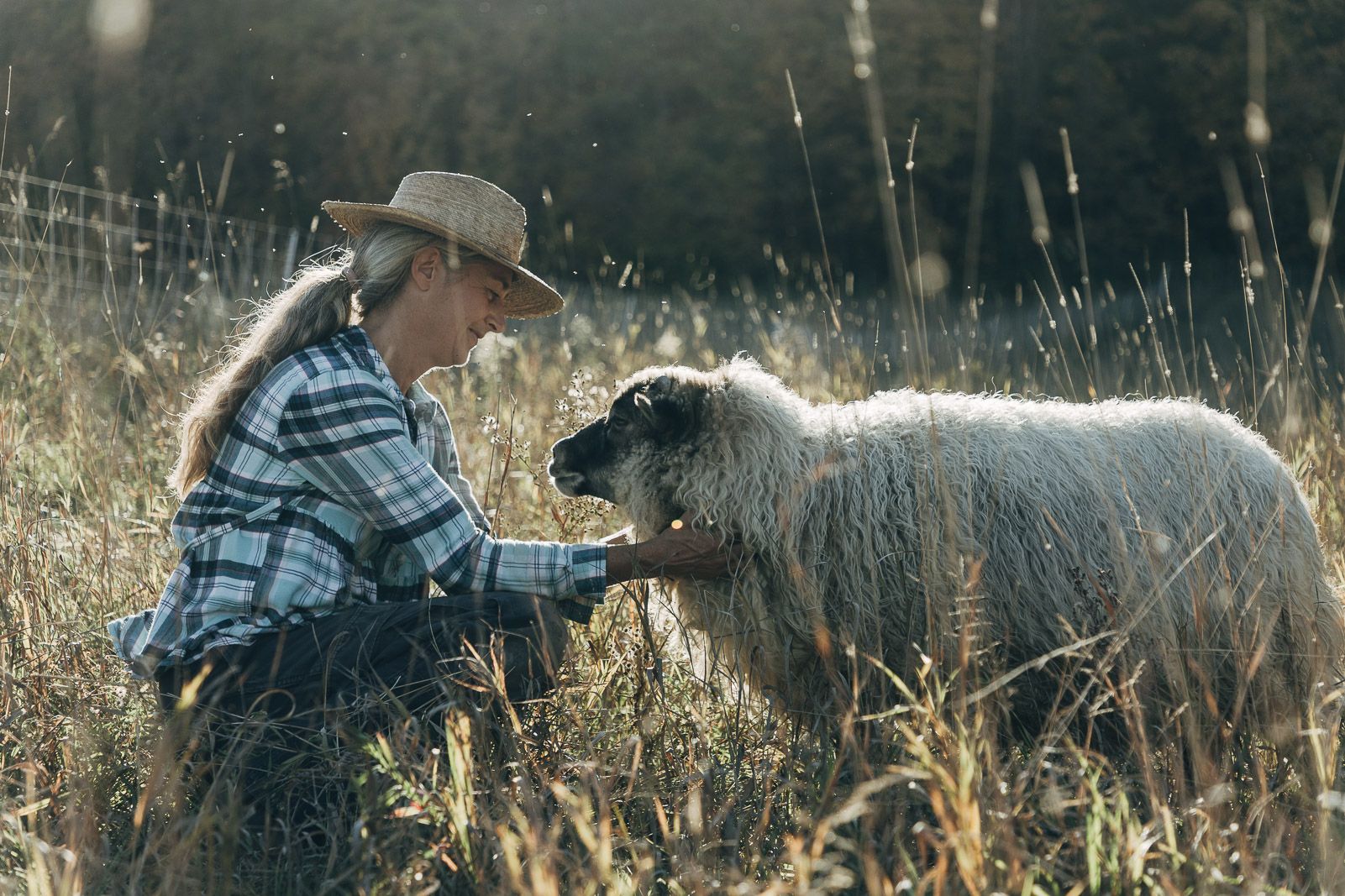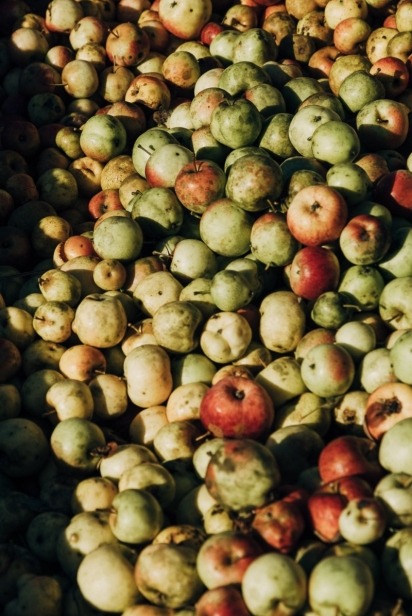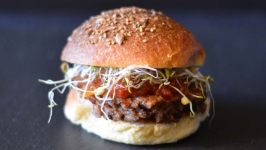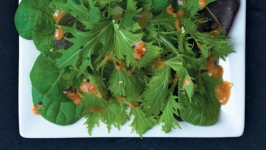Shepherds of the Land
Canada is known as a country of cattle. There are approximately 12 million head of cattle, compared to just 1.1 million sheep. “Why so?” you might ask. Well, it’s complicated. However, because it’s Canada, the weather has something to do with it.
Most lamb producers are small-scale and hobby farmers. They tend to lamb in late winter and early spring, when raging winter storms and the bitter cold have passed. This means that their lamb is slaughtered in the fall, flooding the market for a short period over the fall and early winter. Then, in spring and early summer, large lamb-producing countries such as Australia and New Zealand capture the Canadian market, filling supermarket shelves. Also, given their more temperate climes and year-round production, these countries can continuously supply international markets.
However, there is an increasing demand for lamb in Canada, not least due to a growing interest in what we eat, but also due to an expanding immigrant and ethic population. This should spell good things for local lamb producers, but there’s another stumbling block: slaughter. Small-scale producers find it exceptionally difficult to book slots to get their animals slaughtered when the time comes, leaving many of them with expensive feed bills while they wait. Constantly fluctuating and rising costs make long-term planning and security impossible.
Ferme Sol
The slaughter challenge is one reason Ginger Howell of Ferme Sol near Wakefield substantially reduced her flock. “We are lucky that anybody at all wants to farm in these conditions,” she says. “Farmers just want to farm. It is the essential service. If there’s no food, nothing else matters.” Her second reason for changing focus is that she’s passionate about developing a local textile economy.
Howell, who also works off property at local organic vegetable farm Roots and Shoots, came to farming “seeking a holistic farm system where everything is used; to raise animals ethically; to use the whole animal and to complete the cycle of life.” To this end, she practises a regenerative approach to raising her flock, a mixed bunch of Icelandic, Shetland, Gotland, Freisian and Blue-faced Leicester sheep. She rotates them daily across mature perennial pastures, where they graze on clover, alfalfa, trefoil, dandelions, medicinal plants and native clovers, among other plants. “The more living qualities there are in their food, the more this supports the living qualities in us,” she explains.
Howell sells raw and processed wool, sheepskins and 100 per cent pasture-raised lamb and mutton once a month at the Saturday morning Wakefield Market. With the fleece from her sheep, she offers felting workshops to people of all ages through schools and other community organizations.
“It is a very therapeutic activity that is versatile and easy to learn for artistic exploration and creating functional products,” she says.
These felting workshops are ideal as they eliminate the supply chain costs associated with sending the fleeces away for carding and spinning. The closest mills are in southern Ontario and there are 18-month wait lists. “We don’t have systems in place whereby small producers can make a living,” she says. She’s dreaming of the day when a local co-operative of farmers can set up a mill in the region. There are just so many uses for wool, she explains, such as insulation, duvets, cushion inserts, as fertilizer in the form of wool pellets, for spinning and fabrics.
Ferme Sol
225 Chem. Shouldice, Wakefield, Que.
www.fermsol.ca | @fermesol
Ferme Mouflon
Not far away as the crow flies, Dominique Brosseau and Vicky Lauzon farm on 305 acres close to Quyon. They started on rented land in 2018, with seven Icelandic ewes and one ram. Since their move to Ferme Mouflon in March 2020, their flock now numbers 45 breeding ewes, four rams and in 2023, 61 lambs. There are also alpacas, llamas, three horses, two Armenian gampr livestock dogs, meat and egg chickens.
“Our goal is to have our sheep as long as possible,” Lauzon says.
The pair farms regeneratively, moving the flock daily, which takes about an hour.
“We chose sheep because they are so versatile,” Brosseau explains. “They are independent, they are good mothers and they can give us a bit of everything. When you farm with more diversity, you don’t have to have that many animals.”
The pair sells meat, both lamb and chicken, from the farm gate and via the farm’s website in the autumn — it’s usually sold out by Christmas — and a whole host of other products such as soap, bar shampoo and conditioner, fleeces and wool. Each year, Brosseau and Lauzon host an annual wool-sorting event to remove grass and short pieces, before sending the fleece to Wellington Fibres, a woolen mill in Elora, Ont. From June to August, they milk half the flock, once daily, a milk-share program with the lambs at foot.
“Every year, we will have one or two who really hate it,” says Brosseau, who has a background in biotech and has developed body product recipes to use the milk, which is stored in the freezer. “And those ones, we stop milking, to avoid stress in their lives.” The result is an extremely calm flock that isn’t skittish when humans enter their grazing field. They are also used to visitors as Ferme Mouflon offers farm tours once a month.
Until recently, Lauzon and Brosseau did all their farm chores by hand. They pulled a sled with hay to where the sheep needed it, but the recent addition of a tractor will make that job easier. It comes with a trade-off, however. Less time spent in the field.
“It’s really important with pasture animals to observe,” Lauzon says. “That’s most of our job and it’s how to avoid a lot of issues.”
In a small laboratory in their farmhouse, Brosseau hand-makes soap. She stirs up 50 bars per batch, using natural dyes for colour and essential oils such as lavender, patchouli, ylang-ylang, palma rosa, bergamot, thyme, rosemary, orange, grapefruit and lime to impart scent. Each soap weighs approximately 140 grams at cutting, and 120 grams three months later, once it has dried. On the day of edible Ottawa’s visit, she had just finished a batch of felted soaps, “ideal for exfoliating,” she says, “and they’ll be sold out within days.” Trickier to sell are the sheepskins as they are more expensive, ranging between $180 and $250 depending on size.
Ferme Mouflon products can also be found at regional Christmas markets, at the Agora market in Hull, at festivals, such as at the Mississippi Valley Textile Museum in Almonte and the Medieval Festival in Montpellier, and once a month at the Chelsea Market on a Thursday night.
Ferme Mouflon
8161 Concession 5, E., Quyon, Que.
fermemouflon.com | @fermemouflon
Rock’s End Farm
Erin Krekoski, originally from a farming background in Alberta, has been raising sheep in the Ottawa area since 2013. In 2018, she and her husband, an environmental academic at the University of Ottawa, bought 300 acres in Farrellton, just north of Wakefield. They named it Rock’s End Farm.
Here, she has been farming co-operatively. The farm counts chickens, cattle, a milk cow, horses and four Nubian goats among its residents. The goats are the responsibility of her three home-schooled children — “every animal on the farm must contribute in one way or another,” she says — and so the children have milked them for milk and cheese. Until recently she has hosted grazing cattle for Grazing Days, a farm east of Ottawa. She has a horse-share operation whereby costs are shared, there is a collective vegetable garden on site and a couple of friends have recently harvested 1,500 head of garlic.
Krekoski’s youngest daughter raises meat chickens, “and has a 100 per cent survival rate,” says Krekoski, with a touch of motherly pride. But it’s the sheep that are the largest contributor to the farming enterprise. Krekoski has 65 Icelandic ewes on her land, chosen “because they offer multiple products, such as wool and sheepskin,” she says, “and, as a breed, Icelandics have a centuries-long grass history, to which they are particularly well-suited.” They eat only minerals, salt and well-made hay off her own land and their meat is her main product. She sells direct to consumers via her website and through a meat co-operative, Le Trio Viandes, shared with two neighbouring farmers — Alcovia Angus farm and Hale Family Farms — at the weekly Wakefield Market.
She sells wool for knitting and fleece at that same market. When Krekoski and her husband bought the farm, the buildings were in great shape, but the rest, not so much. She has spent years installing fencing and water infrastructure and now has more than 6,000 feet of above-ground pipes snaking across the land, with a riser every 300 feet. “This allows me to make better use of my time,” she says, alluding to the hours she would otherwise have to spend filling and moving water tanks for the sheep because her sheep move daily as she practises rotational grazing, both for soil and animal health. “The sheep graze 0.62 acres daily and the cows about 2.5 acres. On any given day only two to four acres are being grazed,” she says. “This allows the pastures time to rest and recover as we know that there is as much root depth below ground as there is grass above. Therefore, you don’t want to graze it too close.”
All these sheep-farming women express a certain spiritual connection with their animals and land. Krekoski sums it up succinctly. “I love that my work every day is a meditation on the awesomeness of nature. Nature’s wisdom dwarfs any human knowledge or intelligence. I get to be in that all day, every day,” she says. “And the longer I do it, the more sure I am that if we can just mimic nature in our farming systems, we will find resilience. And that’s a pretty sweet place to be.”
Rock’s End Farm
88 Chem. Echo Dale, Farrellton, Que.
rocksendfarm.ca | @rocksendfarm

















